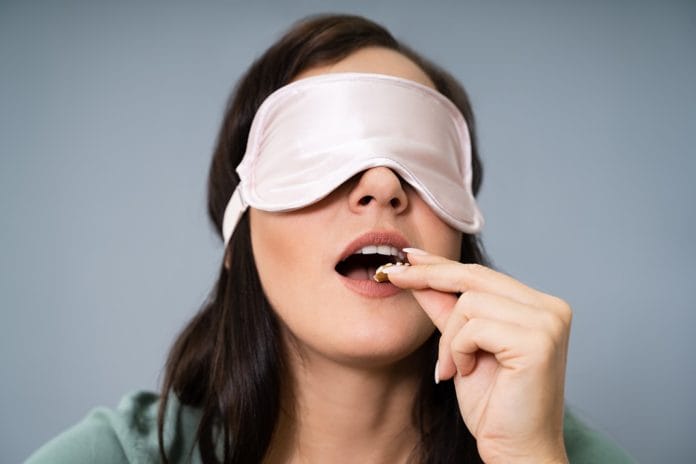Loss of taste is often regarded as less important when compared to vision and hearing loss. It is poorly studied because taste loss is not considered serious or life-threatening. The sense of taste, however, is essential to the overall health of dental patients.1
Also known as dysgeusia, taste disorders can be frustrating for patients and may negatively affect psychological well-being, lead to a lack of interest in eating, and cause malnutrition.2 While the loss of taste can be a natural part of aging, there are many other reasons a patient may be tasting less of their foods.3,4
Normal taste, or normogeusia, allows us to distinguish five main tastes: salty, sweet, sour, bitter, and umami (savory).3,4 Taste sensation has three main functions, including pleasure, defense, and sustenance.5
Taste is due to sensory cells in the mouth and throat called gustatory cells. These cells are activated when we drink fluids, digest, or chew.6 Gustatory receptor cells are located in taste buds on the dorsal and lateral parts of the tongue, soft palate, uvula, larynx, pharynx, epiglottis, and esophagus. These cells can regenerate every 15 days.7
Dysgeusias are classified as qualitative or quantitative. Qualitative dysgeusias include parageusia and phantogeusia. Parageusia is an inadequate or incorrect taste perception with a stimulus, while phantogeusia is the presence of a persistent, unpleasant taste without a stimulus. Quantitative dygeusias are hypogeusia, hypergeusia, and ageusia. Hypogeusia is a partial loss of ability to taste, and hypergeusia leads to an enhanced gustatory taste sensitivity. Ageusia is a total loss of taste and is rare, occurring in only 3% of those with a taste disorder.4,7
A 2011-2012 National Health and Nutrition Examination Survey found that 5% of 142 million U.S. respondents had experienced a taste disorder in the past 12 months. Age-related changes in taste cells are common and can be caused by decreased saliva production or an inability to fully chew food.4
However, a lowered sense of taste is more commonly related to medications, nutritional deficiencies, and oral/systemic diseases over normal aging alone.4
Causes of Dysgeusia
Medication − Medication-induced taste changes have been reported to account for 0.4% of all reported adverse drug effects and up to 22% of taste disorders.3,4
Antimycotics, fluoroquinolones, angiotensin-converting enzyme inhibitors, statins, chemotherapy drugs, antiretrovirals, and proton-pump inhibitors have all been found to cause changes in taste.7
Many medications are excreted into saliva, which may affect the sense of taste by several mechanisms: drug-receptor interactions, disturbance of action potential propagation in cell membranes of afferent and efferent neurons, and altering neurotransmitter function.7
Taste changes from medications may be difficult to address if the medication must be continued for a serious systemic condition. However, patients should discuss other potential options with their medical providers. Improvement in taste changes has been reported within days to months after discontinuing the causative medication.4,7
Cancer treatments − Direct or indirect effects of ionizing radiation can induce oral complications such as dental caries, oral mucositis, xerostomia, and candidiasis. Chemotherapy and radiation can cause changes and the death of gustatory cells through a higher rate of cell turnover.5,7 More than 75% of radiation therapy patients experience some taste changes.4
It is hypothesized that the secretion of chemotherapy agents in saliva or gingival crevicular fluid may contribute to taste disturbances as well. Damage to salivary glands may also occur from these treatments. Since saliva is vital in transporting stimulants to taste sensory cells, loss of taste may result.4
On a positive note, most patients fully recover their taste within a few months to a year of completing chemotherapy or radiation treatments.4
Nutritional deficiency − Nutritional deficiencies can play a role in taste changes and can indirectly influence the outcomes of more serious conditions by decreasing nutritional intake further.1
The primary nutrient deficiency associated with taste loss is zinc. Zinc deficiency causes a reduction in the number and size of taste buds. Enzymes that require zinc are contained in the taste buds and play an important role in taste function.1,7
Two studies have shown a positive effect of a zinc gluconate regimen of 50 mg three times daily for 12 weeks on taste disorders in zinc-deficient populations. It is believed to aid in treating taste disorders by promoting the proliferation of normal taste bud cells, even in those without a zinc deficiency. Although low serum levels of zinc and iron contribute to taste disturbances, there is not yet enough evidence to conclude the role of a zinc supplement in the improvement of taste.1,2,4
Another important nutrient to taste is vitamin A. Vitamin A deficiency can cause the atrophy of taste buds, each of which usually contains 50 to 100 taste receptors. A vitamin B12 deficiency will contribute to atrophic glossitis and loss of taste sensation.4,7
Olfactory changes − Taste and smell disorders are closely related. Smell disorders may cause taste loss.6 Gustatory functions are tied to our sense of smell by the somatosensory system and perception of pain.8
Loss of taste results from a change in a person’s response to any of the five taste modalities. Loss of perception of flavor results from damage to the olfaction system or trigeminal nerve that supplies somatosensation to the oral and perioral tissues.4
In a study of 68 patients with chronic rhinosinusitis, there was a 28% prevalence of dysgeusia. Upper respiratory disorders are frequently associated with both taste and smell disorders. An NHANES 2011-2012 report found that 38% of those with taste disorders experienced nasal congestion.7,9
Systemic disorders – Sjogren’s syndrome, hypertension, diabetes mellitus, renal disease, liver disease, and thyroid disease can secondarily cause taste changes through neuropathy or changes to the oral environment.4
Studies have found that 80% of uncontrolled and 50% of controlled diabetics had taste impairment, mostly affecting sweet, sour, and salty. People with diabetes have higher electrogustometric thresholds (related to taste testing) and lower-density fungiform papillae. This may affect food choices and glycemic control.4,7
Solutions to Dysgeusia
Testing for changes in taste − Gustatory testing is performed as a whole-mouth procedure or as a regional test. Natural and electrical stimuli are used. Regional testing uses 20 to 50 mL of liquid stimulant from a pipette to the anterior and posterior tongue. Some regional tests use soaked filter-paper disks or cotton swabs. Whole-mouth testing uses 2 to 10 mL of solution. The patient swishes, spits, and rinses with water.8
Preferred natural stimulants for threshold tests are sucrose (sweet), citric acid (sour), sodium chloride (salty), and quinine or caffeine (bitter). Referred to as the “three-drop test,” three drops of a stimulant/water ratio of 1:2 is used to find the threshold defined as the concentration at which the patient correctly identifies the taste consecutively three times.8
Electrogustometry is a well-established clinical tool for the estimation of taste detection thresholds. It tests the sense of taste by applying galvanic stimuli to the tongue.7 Electrogustometry induces gustatory sensations using an anodal electric direct current.8
Screening and treatment − The first steps in screening for taste disorders in the dental chair begin with a comprehensive health history and a thorough review of medications. Include questions about salivary flow, problems with taste and smell, chewing issues, pain in the oral cavity, dental hygiene routine, and ear and upper respiratory infection history.7
Ask patients about issues with their dental prostheses. Denture wearers with maxillary dentures that cover the palate often report taste disorders. Wearing a dental prosthesis can contribute to phantogeusia and glossodynia (burning mouth syndrome).7,8
Evaluating and managing xerostomia is also important because low salivary flow limits access to taste chemicals by sensing receptors due to mucosal dryness, which also impacts the sense of taste. Salivary diagnostics, including flow rate and composition, may be indicated.7,8
Unfortunately, there are few therapeutic options for gustatory dysfunction. Clonazepam has been proven to help treat phantom tastes and dysgeusia associated with burning mouth syndrome. Patients with unpleasant phantom tastes or lowered taste thresholds may want to reduce their intake of metallic or bitter foods like meat, coffee, or tea. Cooling foods also reduces unpleasant flavors.4,8
In Closing
Dental hygienists should closely note changes in weight and appetite. Patients might indicate less overall enjoyment of food. Provide referral options for patients to a medical provider for bloodwork to rule out vitamin deficiencies and metabolic or endocrine disorders or an ENT for the management of any upper respiratory issues.4,7
Taste disorders can be frustrating for patients and may have negative psychological effects, which can lead to a lack of interest in eating and cause malnutrition. Dental hygienists can help patients’ overall well-being by providing the appropriate referrals.
Before you leave, check out the Today’s RDH self-study CE courses. All courses are peer-reviewed and non-sponsored to focus solely on high-quality education. Click here now.
Listen to the Today’s RDH Dental Hygiene Podcast Below:
References
- Hewlings, S., Kalman, D. A Review of Zinc-L-Carnosine and Its Positive Effects on Oral Mucositis, Taste Disorders, and Gastrointestinal Disorders. Nutrients. 2020; 12(3): 665. https://doi.org/10.3390/nu12030665
- Kumbargere Nagraj, S., George, R.P., Shetty, N., et al. Interventions for managing taste disturbances. The Cochrane Database of Systematic Reviews. 2017; 12(12): CD010470. https://doi.org/10.1002/14651858.CD010470.pub3
- Rademacher, W.M.H., Aziz, Y., Hielema, A., et al. Oral Adverse Effects of Drugs: Taste Disorders. Oral Dis. 2020; 26(1): 213-223. https://onlinelibrary.wiley.com/doi/full/10.1111/odi.13199
- Su, N., Ching, V., Grushka, M. Taste Disorders: A Review. J Can Dent Assoc. 2013; 79: d86. https://jcda.ca/sites/default/files/d86/d86.pdf
- Deshpande, T.S., Blanchard, P., Wang, L., et al. Radiation-Related Alterations of Taste Function in Patients with Head and Neck Cancer: A Systematic Review. Current Treatment Options in Oncology. 2018; 19(12): 72. https://doi.org/10.1007/s11864-018-0580-7
- Taste. (n.d.). CliffsNotes. https://www.cliffsnotes.com/study-guides/anatomy-and-physiology/the-sensory-system/taste
- Syed, Q., Hendler, K.T., Koncilja, K. The Impact of Aging and Medical Status on Dysgeusia. The American Journal of Medicine. 2016; 129(7). https://pubmed.ncbi.nlm.nih.gov/26899755/
- Heckmann, J.G., Heckmann, S.M., Lang, C.J.G., Hummel, T. Neurological Aspects of Taste Disorders. Arch Neurol. 2003; 60(5): 667-671. https://jamanetwork.com/journals/jamaneurology/fullarticle/784121
- Othieno, F., Schlosser, R.J., Rowan, N.R., et al. Taste Impairment in Chronic Rhinosinusitis. International Forum of Allergy & Rhinology. 2018; 8(7): 783-789. https://doi.org/10.1002/alr.22113












